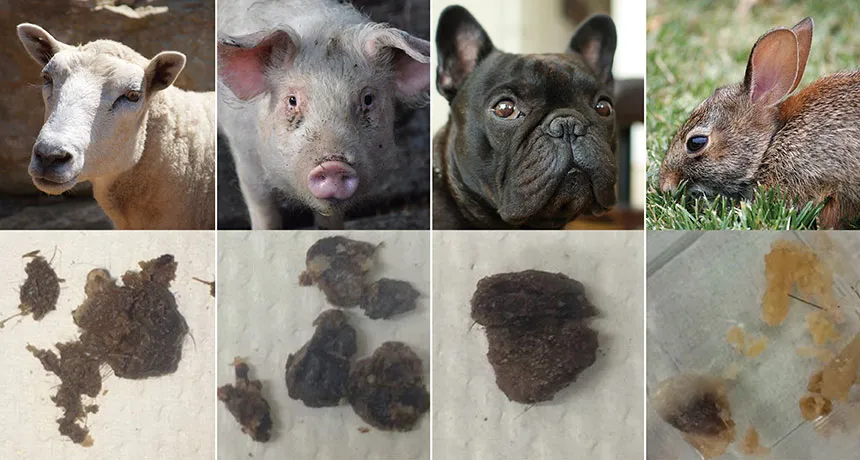Here’s how earwax might clean ears
Goo traps incoming dust; chewing motion may ferry crumbling concoction out

WHAT’S IN YOUR EAR? Studying earwax (sample below the type of animal donor species) might inspire new ways to reduce dust buildup.
Top row, left to right: David DeHetre/Flickr (CC BY 2.0); Dan Belanescu/Flickr (CC BY 2.0); Rob Wells/Flickr (CC BY-SA 2.0); Marit & Toomas Hinnosaar/Flickr (CC BY 2.0); bottom row: A. Noel, Z. Zachow and D. Hu/Georgia Tech






